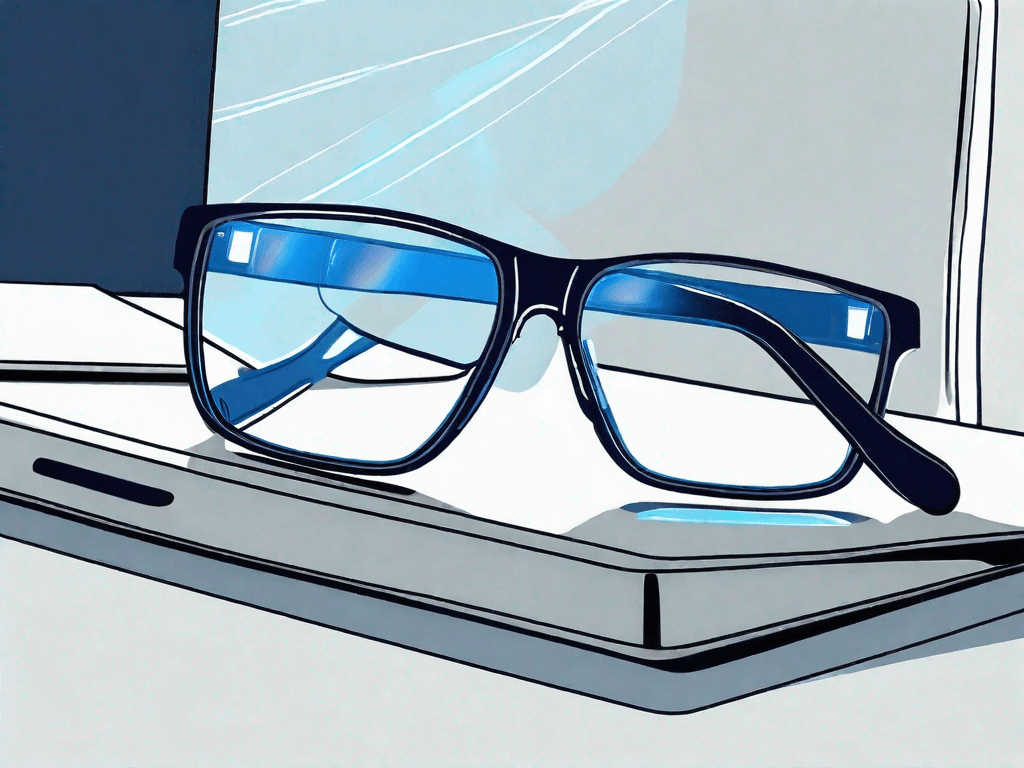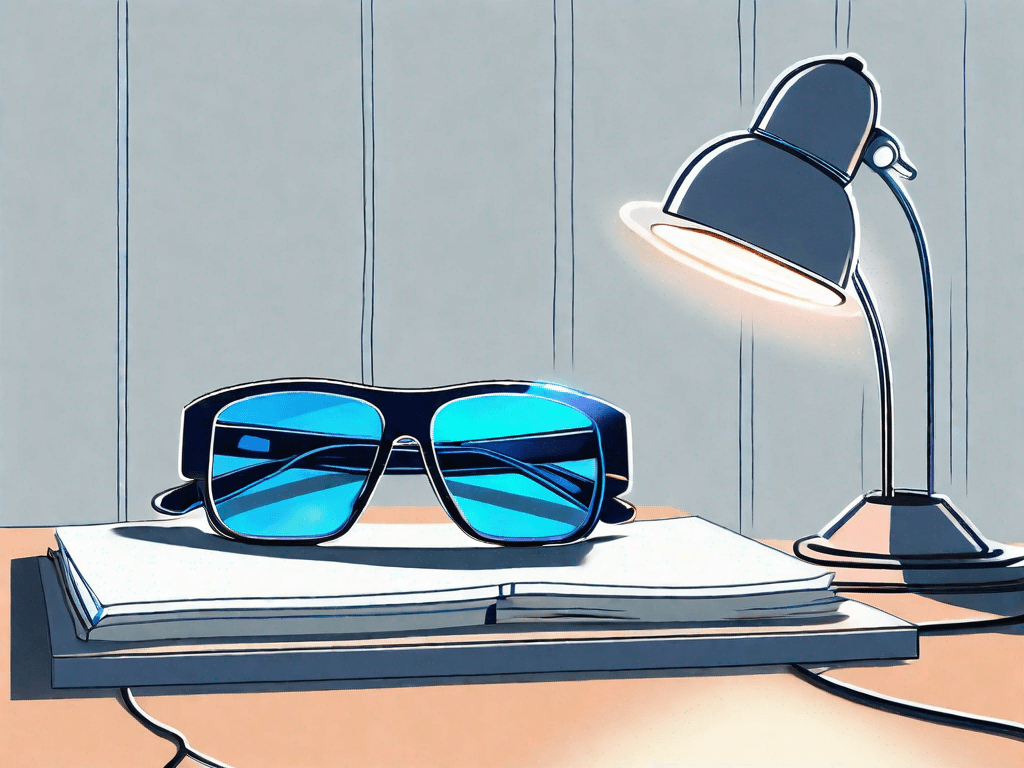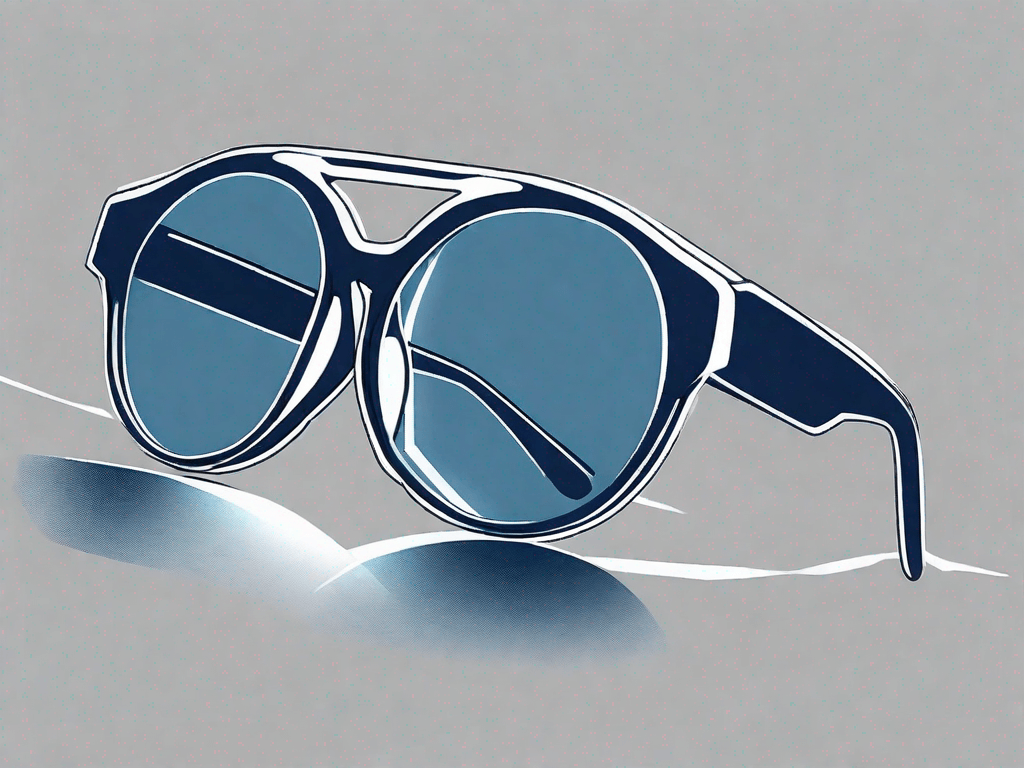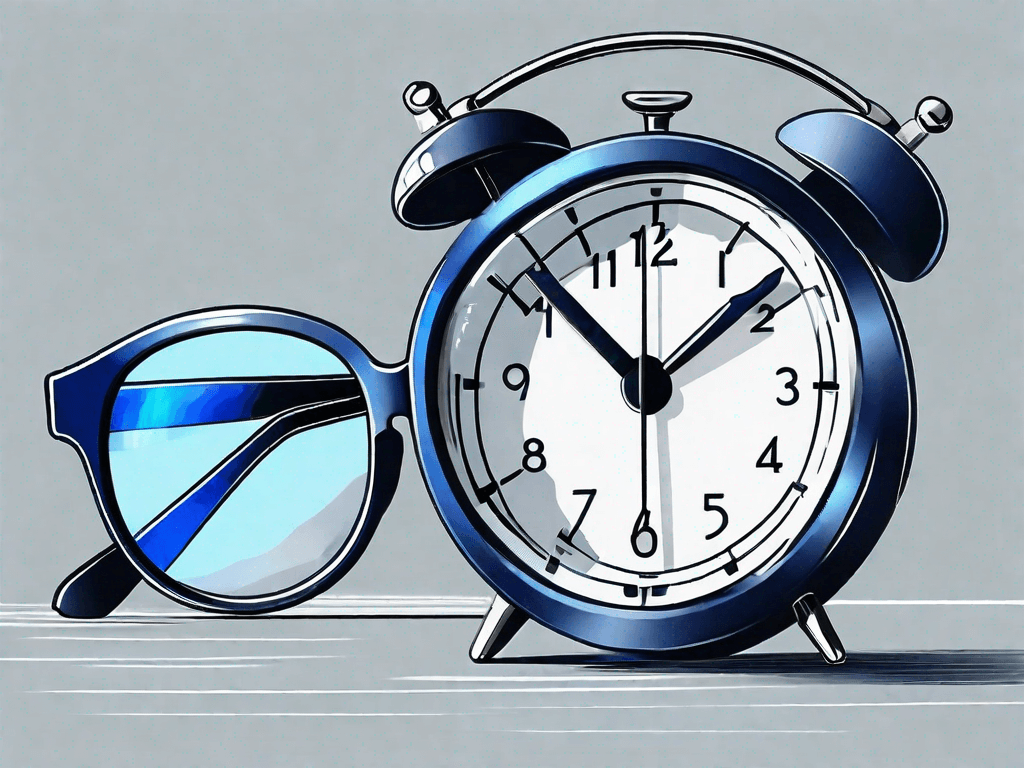Do Blue Light Glasses Have a Tint?
Blue light glasses have gained popularity in recent years as more people are spending time in front of digital screens. These glasses are designed to filter out harmful blue light emitted by electronic devices, such as smartphones, tablets, and computers. But do blue light glasses have a tint?
In this article, we will explore the world of blue light glasses and uncover the truth behind their tint.
Understanding Blue Light Glasses
Before diving into the topic of tint, let's first understand what blue light glasses are. Blue light glasses, also known as blue-blocking glasses, are specialized eyewear that features lenses with a filtering mechanism.
Blue light glasses, as the name suggests, are glasses that are designed to protect your eyes from the harmful effects of blue light. Blue light is a high-energy light that is emitted by digital screens and can cause various eye problems, including digital eye strain, dry eyes, and sleep disruptions.
The lenses of blue light glasses are coated with a special material that filters out blue light. This material is often a yellow or amber tint, which helps to block a specific range of wavelengths associated with blue light. In simple terms, blue light glasses work by reducing the amount of blue light that reaches your eyes.
Now, let's delve deeper into the science behind blue light glasses. The filtering mechanism of these glasses is based on the principle of selective light absorption. The lenses are designed to selectively absorb and block the harmful blue light, while allowing other wavelengths of light to pass through.
Blue light glasses use a specific type of coating called a blue light filter. This filter is made up of tiny molecules that are embedded within the lens material. These molecules have the ability to absorb and scatter blue light, preventing it from reaching your eyes.
The yellow or amber tint of the lenses is crucial in enhancing the filtering effect. This tint is specifically chosen because it has a high absorption rate for blue light. When blue light passes through the lens, the tint absorbs a significant portion of it, reducing the intensity of blue light that reaches your eyes.
It's important to note that not all blue light is harmful. Our bodies actually need some exposure to blue light for regulating our sleep-wake cycle and boosting our mood. Blue light glasses are designed to filter out the excessive and potentially harmful blue light emitted by digital screens, while still allowing a safe amount of blue light to pass through.
When wearing blue light glasses, you may notice a slight change in color perception. This is because the tint of the lenses alters the way your eyes perceive colors. However, this change is minimal and does not significantly affect your ability to see and distinguish colors accurately.
Blue light glasses have gained popularity in recent years due to the increasing use of digital devices in our daily lives. Whether you're working on a computer, scrolling through your smartphone, or watching TV, you're constantly exposed to blue light. By wearing blue light glasses, you can reduce the strain on your eyes and minimize the potential long-term effects of blue light exposure.
The Tint in Blue Light Glasses
Now let's address the main question at hand - the tint in blue light glasses. Yes, blue light glasses do have a tint, but it is not the same type of tint you would find in sunglasses.
Characteristics of the Tint
The tint in blue light glasses is usually a slight yellow or amber color. This tint is specifically chosen to block the specific wavelengths of blue light while allowing other colors to pass through. The color is carefully calibrated to provide optimal protection while maintaining true color perception.
When it comes to the characteristics of the tint, there are a few important factors to consider. Firstly, the intensity of the tint can vary depending on the brand and model of the blue light glasses. Some glasses may have a lighter tint, while others may have a more pronounced color. This variation allows individuals to choose the level of blue light protection that suits their needs.
Additionally, the tint in blue light glasses is designed to be consistent across the entire lens. This means that no matter where you look through the glasses, you will experience the same level of color filtration. This uniformity ensures that your eyes are protected from blue light regardless of your line of sight.
Purpose of the Tint in Blue Light Glasses
The tint in blue light glasses serves two main purposes. Firstly, it helps to filter out a significant portion of blue light, reducing the strain on your eyes. Blue light, which is emitted by digital screens and artificial lighting, can cause eye fatigue, dryness, and even disrupt your sleep patterns. The tint in blue light glasses acts as a barrier, blocking a substantial amount of blue light from reaching your eyes and minimizing these negative effects.
Secondly, the tint in blue light glasses enhances contrast, making it easier to see details on digital screens. By reducing the amount of blue light that enters your eyes, the tint helps to improve visual clarity and sharpness. This can be particularly beneficial for individuals who spend long hours in front of screens, such as those who work in offices or students who study online.
Furthermore, the tint in blue light glasses can also have a positive impact on color perception. While the tint blocks blue light, it does not distort other colors. This means that you can still enjoy accurate color representation while wearing blue light glasses. Whether you're watching a movie, editing photos, or simply browsing the web, the tint ensures that you see colors as they were intended to be seen.
It's worth noting that the effectiveness of the tint in blue light glasses can vary depending on the specific wavelengths of blue light being blocked. Different brands may utilize different technologies and materials to achieve their desired level of blue light filtration. Therefore, it's important to choose blue light glasses from reputable manufacturers that prioritize quality and performance.
In conclusion, the tint in blue light glasses is carefully selected to block blue light while maintaining true color perception. It serves the dual purpose of reducing eye strain and enhancing contrast, making it easier to view digital screens. By understanding the characteristics and purpose of the tint, you can make an informed decision when selecting blue light glasses that best suit your needs.
Different Types of Blue Light Glasses
Not all blue light glasses are the same. There are different types available on the market, each with its own unique features and benefits.
Blue light glasses have gained popularity in recent years due to the increased use of digital devices and the potential harmful effects of blue light exposure. These glasses are designed to filter out or block blue light, which is emitted by electronic screens such as smartphones, tablets, and computers.
While all blue light glasses serve the same purpose of reducing blue light exposure, there are variations in their design and functionality.
Tinted vs. Non-Tinted Blue Light Glasses
One of the main differences between blue light glasses is whether they are tinted or non-tinted. Tinted blue light glasses have the yellow or amber tint we discussed earlier, while non-tinted glasses have clear lenses. The choice between tinted and non-tinted glasses depends on personal preference and the level of blue light exposure you experience.
Tinted blue light glasses are known for their ability to enhance contrast and reduce glare, making them a popular choice for individuals who spend long hours in front of screens. The yellow or amber tint helps to filter out blue light while maintaining color accuracy. These glasses can be particularly beneficial for individuals who work in professions that require color accuracy, such as graphic designers or photographers.
On the other hand, non-tinted blue light glasses offer a more natural viewing experience. These glasses are designed to block blue light without altering the color perception. They are a suitable option for individuals who prefer a clear lens appearance or those who do not require enhanced contrast.
Comparing Different Brands and Models
When choosing blue light glasses, it's important to consider the brand and model. Different brands may use different materials and technologies to filter out blue light. It's worth doing some research and reading reviews to find the best option for your needs.
Some brands offer blue light glasses with additional features such as anti-reflective coatings, scratch resistance, and UV protection. These features can enhance the overall durability and performance of the glasses, providing added value for the user.
Furthermore, certain blue light glasses are designed to be more stylish and fashionable, catering to individuals who want to protect their eyes while maintaining a trendy appearance. These glasses often come in a variety of frame styles and colors, allowing users to express their personal style while enjoying the benefits of blue light protection.
It's also worth noting that some blue light glasses are specifically designed for specific activities or environments. For example, there are blue light glasses tailored for gaming, which offer additional features such as enhanced contrast and reduced eye strain during long gaming sessions.
In conclusion, the world of blue light glasses is diverse and ever-evolving. Whether you opt for tinted or non-tinted glasses, it's important to choose a reputable brand and model that suits your specific needs and preferences. By investing in high-quality blue light glasses, you can protect your eyes from the potential harmful effects of blue light and enjoy a more comfortable viewing experience.
The Effectiveness of Tinted Blue Light Glasses
Now that we understand the tint in blue light glasses, let's discuss how effective they are in protecting your eyes from blue light.
Blue light glasses have gained popularity in recent years as a potential solution to the negative effects of blue light exposure. But how exactly do these glasses work and how effective are they in filtering out harmful blue light?
How Tint Affects Blue Light Filtration
The tint in blue light glasses plays a significant role in filtering out blue light. By blocking specific wavelengths, it reduces the amount of blue light that reaches your eyes. This can help alleviate eye strain, reduce the risk of digital eye fatigue, and improve sleep quality.
But not all blue light glasses are created equal. The level of blue light filtration may vary depending on the brand and model of the glasses. Some glasses may block a higher percentage of blue light, while others may provide a more subtle tint. It's important to consider your specific needs and preferences when choosing the right pair of blue light glasses.
Evaluating the Performance of Tinted Glasses
When evaluating the performance of tinted blue light glasses, factors such as the percentage of blue light blocked and the overall comfort of the glasses should be considered. Higher-quality glasses often come with a certification that indicates the level of blue light filtration they provide.
Additionally, comfort is key when it comes to wearing blue light glasses. Glasses that are too tight or heavy can cause discomfort and may discourage consistent use. Look for glasses that are lightweight, adjustable, and designed with ergonomic features to ensure a comfortable fit.
It's also important to note that blue light glasses are not a foolproof solution and should be used in conjunction with good screen habits and regular eye breaks. While these glasses can help reduce blue light exposure, it's still important to practice healthy screen usage, such as maintaining proper posture, taking frequent breaks, and adjusting screen brightness.
In conclusion, tinted blue light glasses can be an effective tool in protecting your eyes from the negative effects of blue light. By understanding how the tint affects blue light filtration and evaluating the performance of different glasses, you can make an informed decision when choosing the right pair for your needs. Remember to prioritize comfort and use blue light glasses as part of a holistic approach to eye health and digital well-being.
Choosing the Right Blue Light Glasses
With so many options available, choosing the right blue light glasses can seem overwhelming. However, by considering a few key factors, you can make an informed decision.
Blue light glasses have become increasingly popular in recent years as more people spend extended periods of time in front of screens. These glasses are designed to filter out the harmful blue light emitted by electronic devices, such as computers, smartphones, and tablets. By reducing exposure to blue light, these glasses aim to alleviate eye strain, improve sleep quality, and protect long-term eye health.
Factors to Consider When Buying
When buying blue light glasses, consider factors such as the level of blue light filtration, the comfort of the glasses, the style and design, and the overall quality. The level of blue light filtration is an important consideration as it determines how effectively the glasses block out the harmful rays. Look for glasses that offer a high level of filtration, ideally blocking out at least 90% of blue light.
Comfort is another crucial factor to consider. Since you'll likely be wearing these glasses for extended periods, it's important to find a pair that fits well and feels comfortable on your face. Look for glasses with adjustable nose pads and lightweight frames to ensure a snug and comfortable fit.
The style and design of the glasses are also important considerations. Blue light glasses come in a variety of styles, ranging from classic and sophisticated to trendy and fashionable. Choose a style that suits your personal taste and complements your face shape. Remember, you'll be wearing these glasses regularly, so it's essential to find a pair that you feel confident and comfortable in.
Lastly, consider the overall quality of the glasses. Look for reputable brands that use high-quality materials and have a good reputation for producing durable and long-lasting products. Reading customer reviews can also provide valuable insights into the quality and performance of different brands and models.
It's also a good idea to consult with an eye care professional who can provide guidance based on your specific needs. They can help determine the level of blue light filtration you require and recommend brands or models that align with your preferences.
Tips for Selecting the Best Blue Light Glasses
To select the best blue light glasses, try different brands and models to find the one that suits you best. Pay attention to how the glasses feel on your face, the clarity of the lenses, and the overall visual experience. Some glasses may have a slight yellow or amber tint, while others may be virtually clear. Experiment with different tints to find the one that provides the most comfortable and enjoyable viewing experience for you.
Don't be afraid to ask for recommendations or try out different styles before making a final decision. Friends, family, or colleagues who already use blue light glasses may have valuable insights to share. Additionally, many eyewear retailers offer virtual try-on tools or allow you to try on glasses in-store, making it easier to find the perfect pair.
In conclusion, blue light glasses do have a tint - a yellow or amber tint that helps to filter out harmful blue light while allowing other colors to pass through. This tint is carefully calibrated to provide optimal protection and enhance contrast. When choosing blue light glasses, consider factors such as the level of tint, the brand and model, and your personal preferences. Remember that blue light glasses are just one part of maintaining healthy screen habits, and it's important to take regular breaks and practice good eye care.





